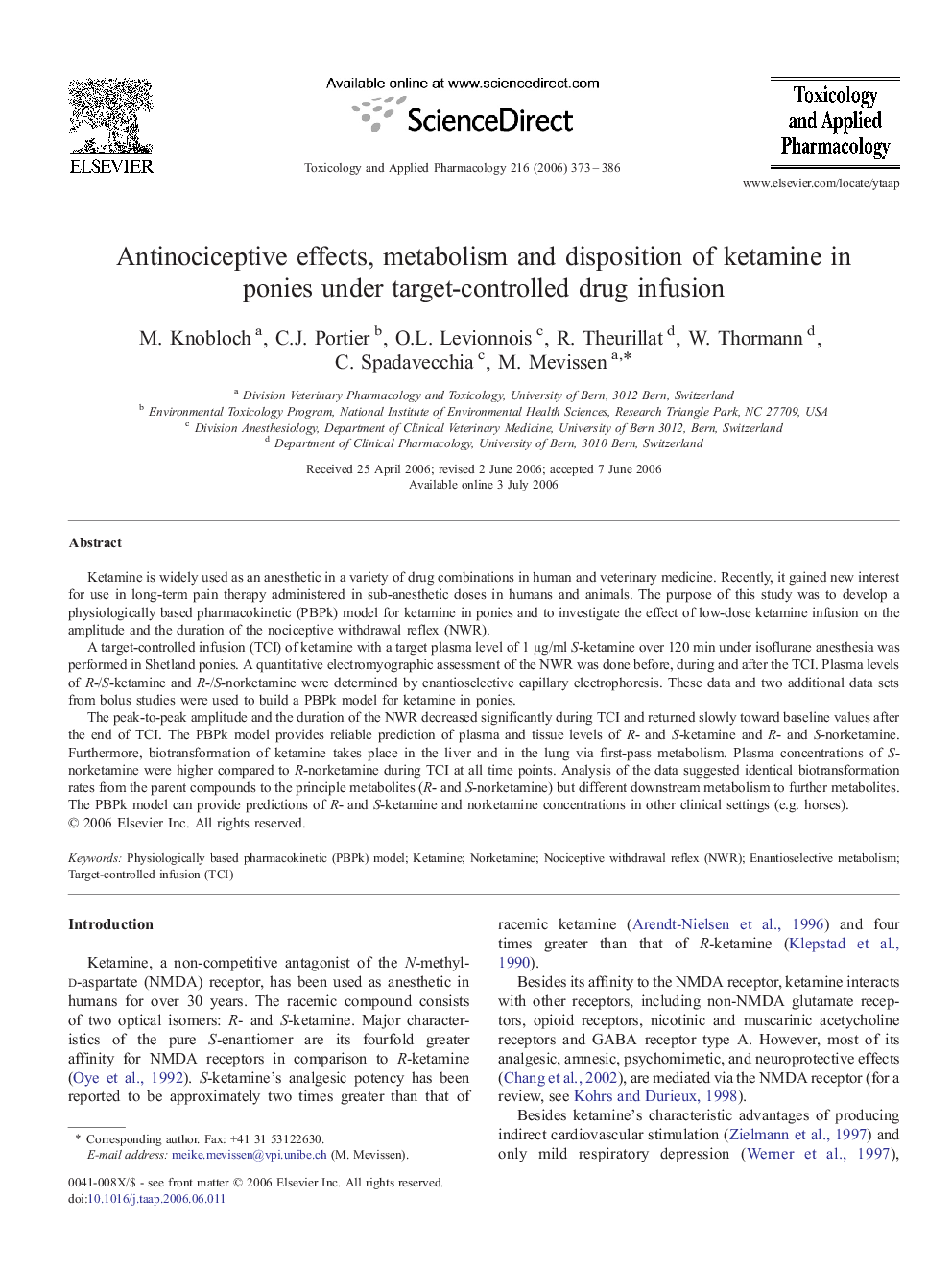| Article ID | Journal | Published Year | Pages | File Type |
|---|---|---|---|---|
| 2571173 | Toxicology and Applied Pharmacology | 2006 | 14 Pages |
Ketamine is widely used as an anesthetic in a variety of drug combinations in human and veterinary medicine. Recently, it gained new interest for use in long-term pain therapy administered in sub-anesthetic doses in humans and animals. The purpose of this study was to develop a physiologically based pharmacokinetic (PBPk) model for ketamine in ponies and to investigate the effect of low-dose ketamine infusion on the amplitude and the duration of the nociceptive withdrawal reflex (NWR).A target-controlled infusion (TCI) of ketamine with a target plasma level of 1 μg/ml S-ketamine over 120 min under isoflurane anesthesia was performed in Shetland ponies. A quantitative electromyographic assessment of the NWR was done before, during and after the TCI. Plasma levels of R-/S-ketamine and R-/S-norketamine were determined by enantioselective capillary electrophoresis. These data and two additional data sets from bolus studies were used to build a PBPk model for ketamine in ponies.The peak-to-peak amplitude and the duration of the NWR decreased significantly during TCI and returned slowly toward baseline values after the end of TCI. The PBPk model provides reliable prediction of plasma and tissue levels of R- and S-ketamine and R- and S-norketamine. Furthermore, biotransformation of ketamine takes place in the liver and in the lung via first-pass metabolism. Plasma concentrations of S-norketamine were higher compared to R-norketamine during TCI at all time points. Analysis of the data suggested identical biotransformation rates from the parent compounds to the principle metabolites (R- and S-norketamine) but different downstream metabolism to further metabolites. The PBPk model can provide predictions of R- and S-ketamine and norketamine concentrations in other clinical settings (e.g. horses).
